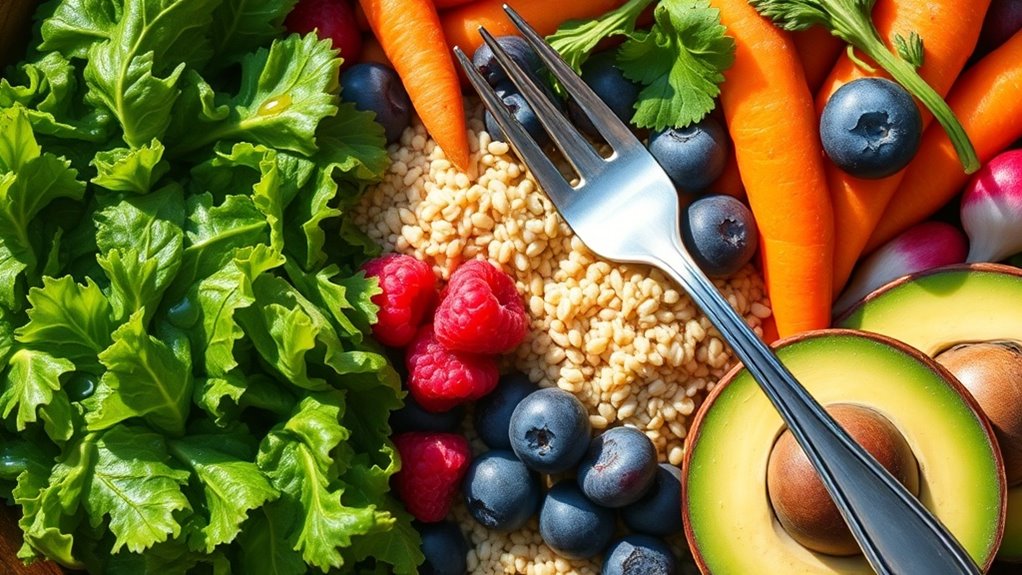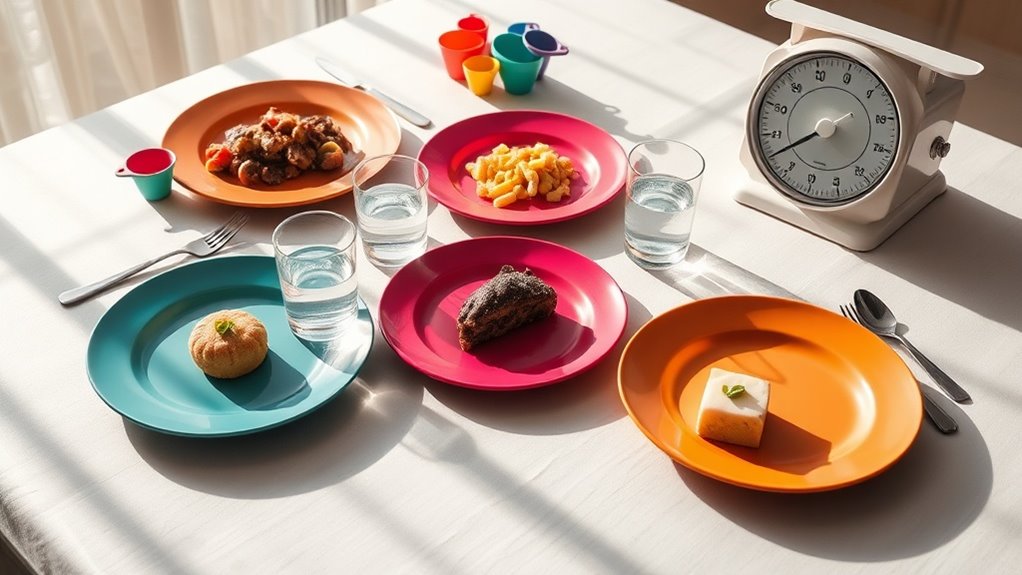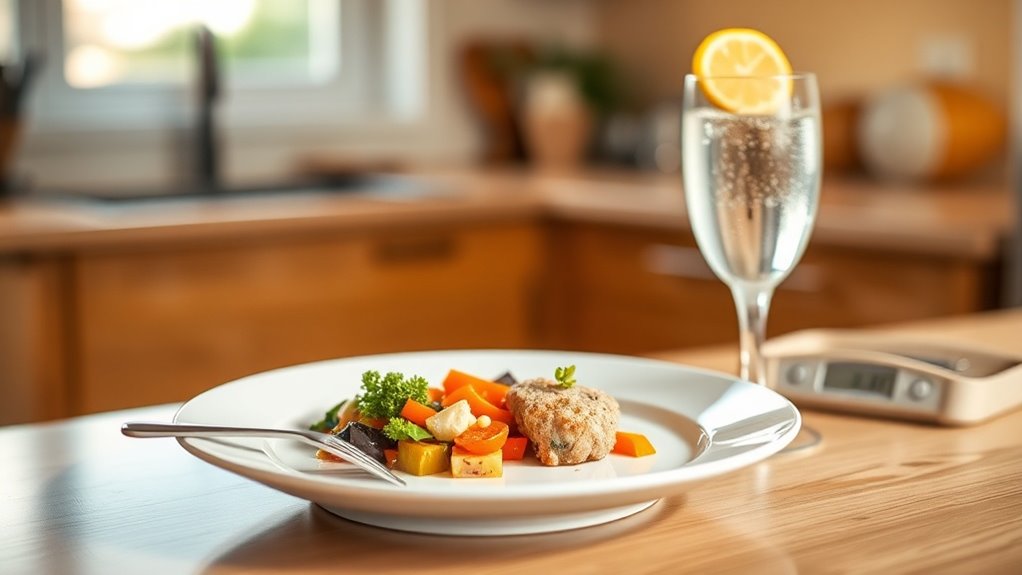Portion Control Secrets That Let You Eat More and Still Lose Weight!
If you want to enjoy satisfying meals while still shedding pounds, mastering portion control is key. It’s not just about eating less; it’s about eating smart. By understanding how your plate size and mindful eating practices influence your appetite, you can create a fulfilling dining experience. Curious about how to make these small changes lead to big results? Let’s explore the secrets that can help you eat more and still achieve your weight loss goals.
Understanding Portion Sizes: The Science Behind Eating Less
Understanding portion sizes is crucial for effective weight loss, especially since many people underestimate how much they actually eat. You might think a serving looks smaller than it is, or you may simply fill your plate without considering what’s appropriate. That’s where portion control comes into play.
By learning to recognize proper portion sizes, you’re setting yourself up for success on your weight loss journey. Visual cues can help—using smaller plates or measuring your food can make a big difference. Using smaller plates can effectively manage portion sizes, tricking your brain into perceiving larger portions.
When you’re mindful of how much you serve yourself, you’ll find it easier to enjoy your meals without feeling deprived. Remember, it’s not just about eating less; it’s about making smart choices that align with your goals.
Joining a community focused on portion control can provide support and encouragement, reminding you that you’re not alone in this journey. Embrace these changes, and you’ll discover a healthier, happier you!
Mindful Eating: Techniques to Enhance Your Meal Experience
Portion control sets the stage for a more satisfying eating experience, and that’s where mindful eating comes in. By being present during your meals, you can truly savor each bite.
Start by eliminating distractions—put away your phone and turn off the TV. Focus on the colors, textures, and aromas of your food. As you eat, chew slowly and pay attention to the flavors unfolding on your palate. This practice not only enhances your meal but also helps you recognize when you’re full.
Try to engage your senses fully; notice how each bite makes you feel. Sharing meals with friends or family can also deepen your connection to food and each other. Additionally, practicing self-compassion during meals can foster a healthier mindset around food enjoyment.
The Power of Plate Size: How Dishware Affects Perception
The size of your plate can significantly influence how much you eat, often without you even realizing it.
Using larger plates can trick your brain into thinking you need more food, leading to overeating. Here are three ways plate size affects your perception:
-
Visual Cues: A full plate always looks more appealing, so you might feel compelled to fill it.
-
Portion Distortion: Larger plates can make smaller portions appear insignificant, causing you to serve yourself more than you actually need.
-
Habit Formation: If you consistently use bigger plates, you’ll develop a habit of expecting more food, reinforcing overeating behaviors. Incorporating high-volume, low-calorie foods like vegetables can help counteract the effects of larger dishware by increasing fullness without extra calories.
Healthy Swaps: Nutrient-Dense Foods That Fill You Up
Incorporating nutrient-dense foods into your diet can make a big difference when it comes to feeling satisfied without overindulging. Instead of reaching for empty-calorie snacks, swap them for whole foods like fruits, vegetables, nuts, and legumes. These options are packed with vitamins and minerals that not only nourish your body but also keep you feeling full longer.
For instance, choose an apple with almond butter instead of chips, or opt for a hearty salad topped with chickpeas instead of a calorie-heavy sandwich. Whole grains like quinoa or brown rice can replace refined pasta, offering fiber that keeps you satisfied.
It’s all about making smart choices that support your goals. By filling your plate with nutrient-dense foods, you can enjoy larger portions while still managing your weight. Additionally, incorporating leafy greens into your meals can further enhance your nutrient intake and help control hunger.
Plus, you’ll cultivate a sense of community as you share these delicious, wholesome meals with friends and family.
Meal Prepping: Planning for Success in Portion Control
When you take the time to meal prep, you’re setting yourself up for success in controlling your portions and making healthier choices.
It’s a game changer for anyone wanting to feel more in control of their eating habits. Here are three steps to get you started:
-
Plan Your Meals: Choose balanced recipes that excite you. Think about what you love and what fits your lifestyle.
-
Portion It Out: Use containers to divide meals into perfect portions. This prevents overeating and makes grab-and-go meals easy.
-
Stay Consistent: Make meal prepping a regular part of your routine. It’ll soon feel second nature, and you’ll notice the difference in how you feel. Additionally, setting clear weekly meal goals can enhance your focus and keep you on track with your portion control efforts.
Staying Hydrated: The Role of Water in Weight Management
Staying hydrated plays a crucial role in weight management, as drinking enough water can help control your appetite and boost your metabolism. When you’re well-hydrated, your body functions better, making it easier to recognize when you’re truly hungry versus just feeling snacky.
Plus, water can fill you up, which means you might eat less during meals.
In a social setting, sipping water instead of sugary drinks helps you stick to your goals while still enjoying time with friends. Think about it: you’re part of a community that values health, and every small choice counts.
Aim for at least eight glasses a day, and try drinking a glass before meals. You’ll find that staying hydrated not only supports your weight loss journey but also makes you feel more energized and connected. Additionally, drinking water before meals can reduce appetite, making portion control easier.




